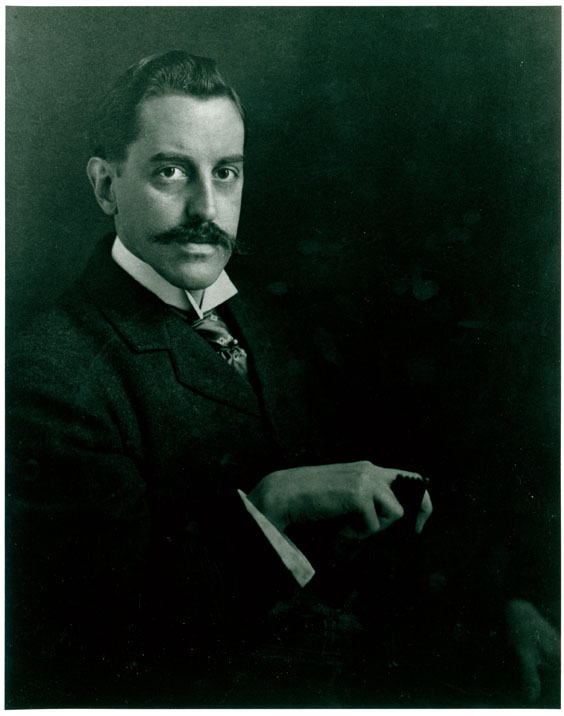On Jan. 9, 1889, The Asheville Citizen featured an article first published by the New York Herald. The report stated:
“Some months ago the good people of Asheville were surprised by the presence in that beautiful little city of Charles McNamee, the New York lawyer, of the well known firm of Davis, Work, & McNammee. Mr. McNamee entered at once, with business-like promptness, upon the purchase of sundry tracts of land just south of the corporate limits of Asheville, across the Swannanoa River. It was soon surmised from the extent of his purchases that he represented some Northern capitalist, and it presently leaked out that his client was none other than George Vanderbilt, the young railroad millionaire.”
The article included a slew of rumors surrounding the purpose of the acquisition. Speculation included the establishment of a women’s college, “an industrial and agriculture school for the poor boys of the south,” a private park “dotted with handsome villas” and “a great game preserve.”
As rumors continued to spread, concerns developed. A Jan. 12, 1889, headline in The Asheville Citizen read: “STILL BUYING LAND: Mr. Vanderbilt’s Domain Extending in Buncombe.” The article went on to report:
“That Mr. Vanderbilt contemplates purchasing the southern portion of the county, is a conjecture that is at present disturbing the minds of the people residing in that section of the ‘State of Buncombe.’
“The purchases still go on, and there is no telling where they will stop. Mr. McNamee is as active and energetic as ever, regarding the acquisition of other tracts to the already large acreage described in these columns before.
“What Mr. Vanderbilt proposes to do, and how he is going to set out about doing it, are problems we are unable to solve. The reticence of his agent and the utter ignorance of the wise-acres, who pretend to know all about it, establishes a veil of mystery, into which, the reportorial eye fails to penetrate.”
On May 12, 1889, The Daily Citizen shared with its readers information provided from an unnamed source. Described only as a “close friend” to the Vanderbilts, this individual informed the paper that Vanderbilt had plans to “erect at once a residence on his large purchase[.]”
Several months later, on Oct. 27, The Daily Citizen confirmed this with a piece reporting a recent model of Vanderbilt’s future “country house.” The paper noted “a chateau in the French Renaissance style over 300 feet long, with steep roofs and towers, and sharp gables, and generally elaborate ornamentation.”
By December, Vanderbilt’s land purchase had doubled to 6,000 from the 3,000 acres originally reported that January. (This number would continue to climb over the years and total 125,000 acres; Edith Vanderbilt would sell off much of the land after her husband’s death in 1914.) Despite the October report, the ongoing secrecy surrounding the estate led one unnamed reporter to hop on a horse and take a ride across the property.
On Dec. 15, 1889, The Daily Citizen published the account. It began:
“Asheville, ‘the Land of the Sky,’ is rife with rumors about what Vanderbilt has done and is going to do, but strange to relate, few facts have been stated, and that, too, when his property lies only a few miles south of the city.
“It was with a view of ascertaining what was really being done that a reporter of THE CITIZEN mounted a horse and galloped down Main street until he reached the Asheville Junction, two miles south of the city.”
What the reporter found included men “drilling, blasting and getting out stones which are being used for the foundations of Vanderbilt’s mansion,” as well as details concerning a large well, stables and men “busy ploughing up the ground and planting rows of white pine[.]”
The article concluded with an account of the reporter’s departure from the estate:
“On the return home as we rode slowly along, looking at those acres and acres of uncultivated farm land, with houses standing untenanted save here and there where a faint blue curl of smoke betrayed the presence of some of Vanderbilt’s workmen, a feeling of loneliness stole over us and both horse and rider would have been cheered by the sound of even a dog barking or a black picaninny running after us asking for a penny. But all was silent and lonely, a deserted village, which will years hence be covered by the forest, which the white man won years ago from the Indian, and clearing off the timber, converted into good arable farm land after many years of hard toil and labor. It was with a sense of relief that we left the oppressive stillness behind, and while the wind in wild gusts seemed to be chanting a soft, sad requiem, we stole away, leaving it to rest in peace, and hailed with delight the hum and bustle of the city as we alighted from our morning’s ride.”
Editor’s note: Peculiarities of spelling and punctuation are preserved from the original documents; antiquated and offensive word choices included in these excerpts reflect the language of the time period.






George Vanderbilt arrived at the old Battery Park Hotel Nov 23, 1887, his lawyer and agent purchased first parcel of land May 1888
I meant to reply directly. Please see comment below. Thanks again.
Thanks Todd. The year, 1889, is in reference to the newspaper accounts shared in the article.